The PHLster EDC kit is no longer available as a kit, but many of the individual component parts are, and that’s why this article is still worth reading years after it was first published. If nothing else, it’ll help you think about how you carry your stuff, which is a good thing. Mad Duo
The FlatPack
Maybe it’s my slight streak of OCD that has yet to be applied to the organization of my house, but there is something about how flat the PHLster Flatpack Tourniquet Carrier can make a CAT-T that makes me happy. If you follow the Youtube instructional video (yes, guys there are instructions, but YOU don’t have to ask for them so its ok for you to watch it) you can pack a CAT down into a pretty small package, (like you guys are so used to). The base of the Flatpack is a plastic backing plate that has two nylon loops on the back to attach horizontally to as wide as a 1.75” belt. You also have the option of removing the nylon loops and attaching a Malice clip to the backing plate in order to mount on Molle/PALS webbing. Two sections of elastic shock cord stretches across the tourniquet to secure it to the hooks cut into the backing plate.
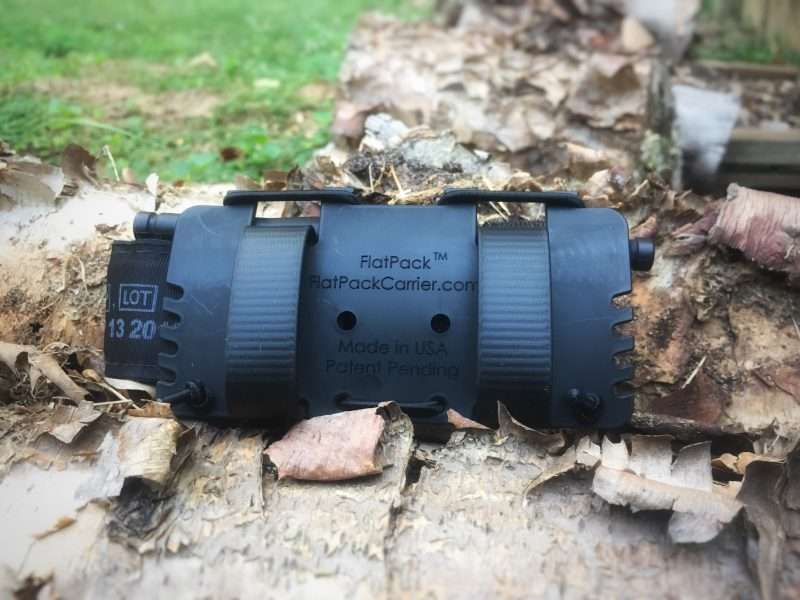
Likes:
The PHLster packs flatter than any other tourniquet carrier I’ve seen. The only limiting factor is the width of the windlass clip on a CAT tourniquet or the width of the windlass of a SOF-T (I’m no superninja para-corpsman-medic but notice I didn’t mention the width of another brand of life saving device? Life’s too short to use shitty gear, and it could be shorter if you do, but grab the popcorn anyway. the comments could get entertaining). The elastic shock cord loops across the tourniquet four times, ensuring security and flattening it out against the backing plate as much as possible. If your intended use for the Flatpack is EDC, then the flatness of the pack is in your favor as much as humanly possible if mounting on a belt.
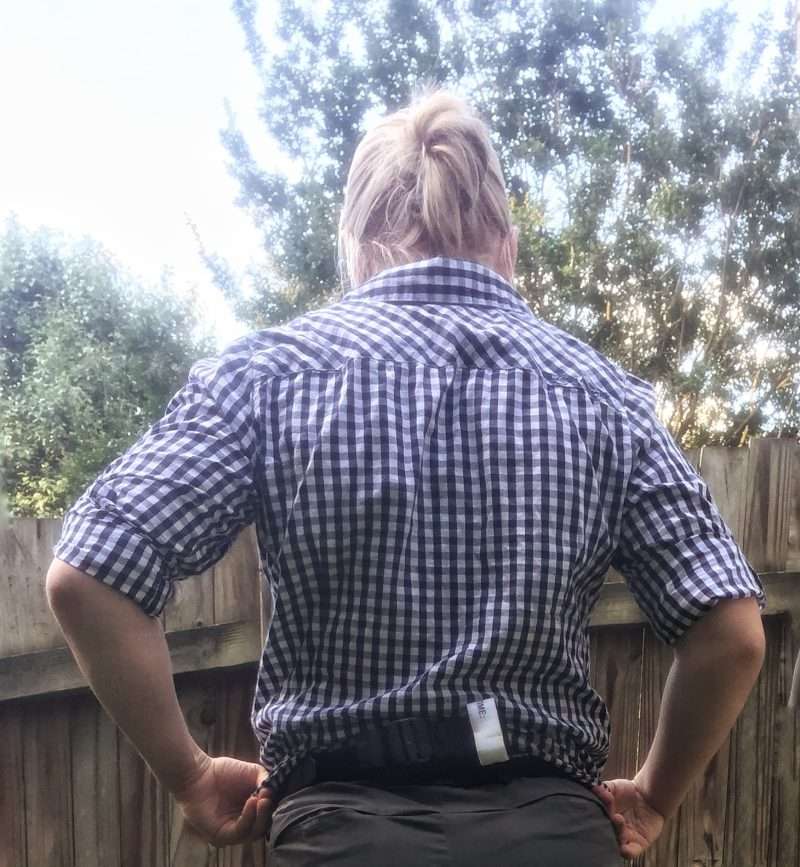
The nylon loops are screwed into the backing plate and the user must run the belt through them while putting the belt on the pants. I find it easiest to run the belt into the belt loops on the pants and on the flatpack, then put the pants on otherwise your transverse plane of motion may be in for a mobility work out. (Grunts, here’s an easy one: Transverse plane)
Concerns:
It’s a belt carry tourniquet carrier and unless I’m wearing flowing robes, I have a difficult time carrying anything outside the waist band unless I tug and adjust my shirt back down every time I stand up or move. That doesn’t change with the Flatpack and I find myself constantly adjusting the back of my shirt, which gets caught on the tourniquet itself. There are not many other options out there for carrying a tourniquet on body, so if it works for you, count yourself blessed.
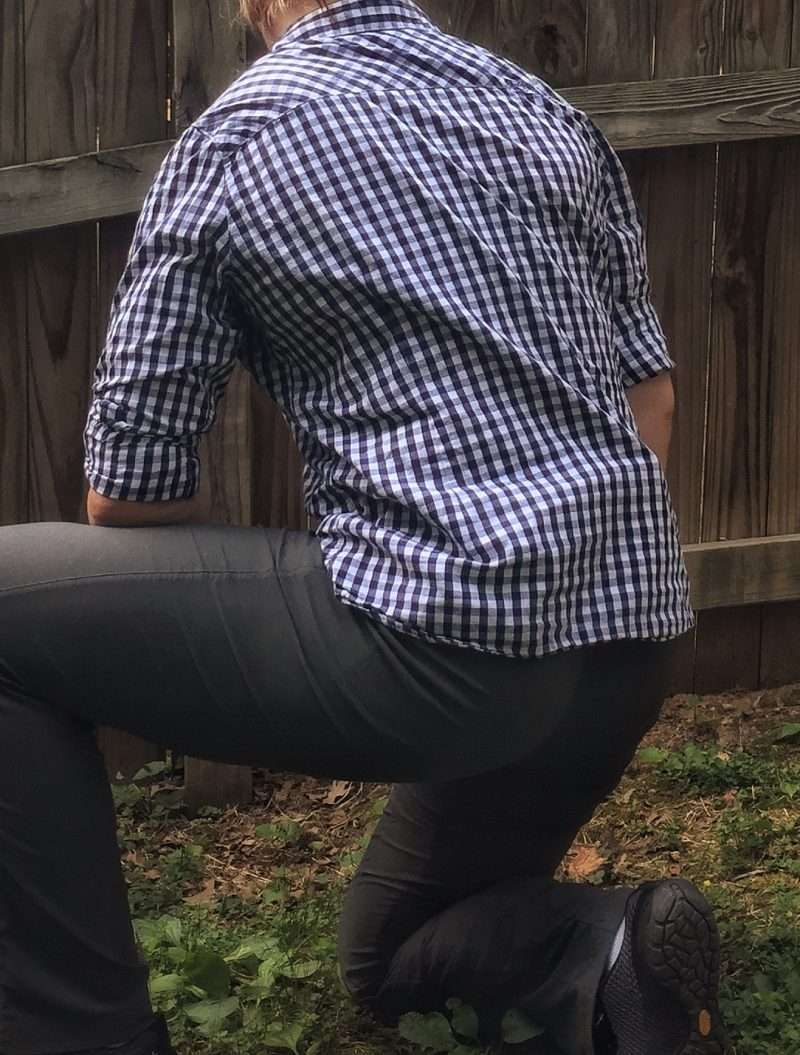
I have been carrying the Flatpack at the small of my back and one issue that I ran into was which direction the carrier faced concerning the hooks that catch the elastic shock cord and secure the tourniquet to the backing plate. When I carried the Flatpack hooks side down and sat in a vehicle, the contact against the seat caused the elastic to roll and disengage themselves from the hooks, releasing the tourniquet. I repacked the tourniquet, flipped the Flatpack over so hooks faced up, and the problem was solved.
Bottomline, the concerns I have with the PHLster Flatpack are either easily mitigated by the user or is simply my own problem with carrying ANYTHING outside the waist band. PHLster’s Flatpack is one of the better options for outside the waistband belt carry for everyday or range use, and boasts a very secure and flat retention system that can be easily manipulated with one hand.
Gen2 PHLster Skeleton Universal Magazine Carrier
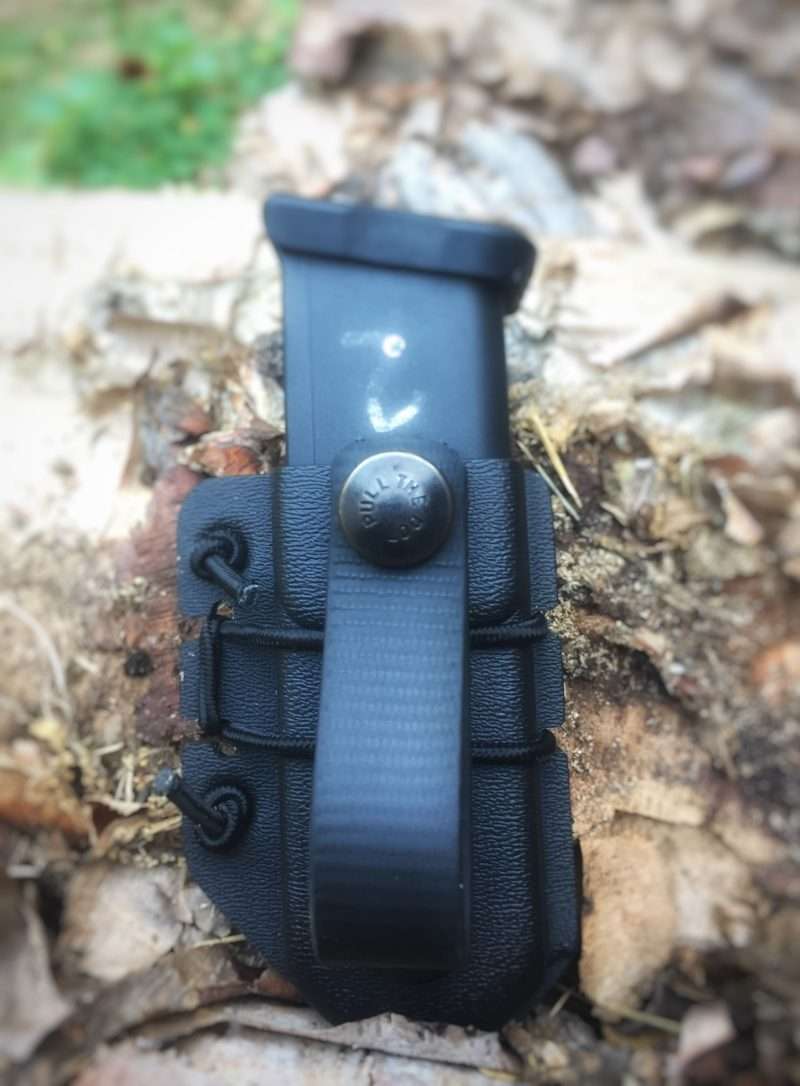
The magazine carrier is the simplest construction possible for its capabilities. Finding the perfect location of features on a sliding scale between complexity and simplicity can be a difficult one, but I think PHLster does a pretty good job of finding it with this carrier. The carrier is built of plastic two-piece construction held together by a shock cord wrap. The shock cord allows the user to adjust magazine retention by simply knotting the shock cord tighter. Standard mounting options includes a soft loop or an over-hook clip, and adding a tuckable strut is an additional option available for purchase.
Likes:
Mostly universal, this carrier is designed to fit full size Glock magazines and most other double stack pistol magazines. It is completely ambidextrous, and can be used rounds forward, rounds back, left, right, and upside down (don’t do that). The ability for gear to be as flexible and applicable to the broadest range of audiences may be a programing failure caused by the Marine Corps’ “One size fits all” mentality, or I just don’t want to spend money on multiple similar pieces of gear that provide the same function. The more complex the product is, the more problems it seems to develop over time, and with fewer failure points, the simplicity of this design is appealing. All that being said, I like the flexibility this carrier provides to the user in such a simple, well thought out design.
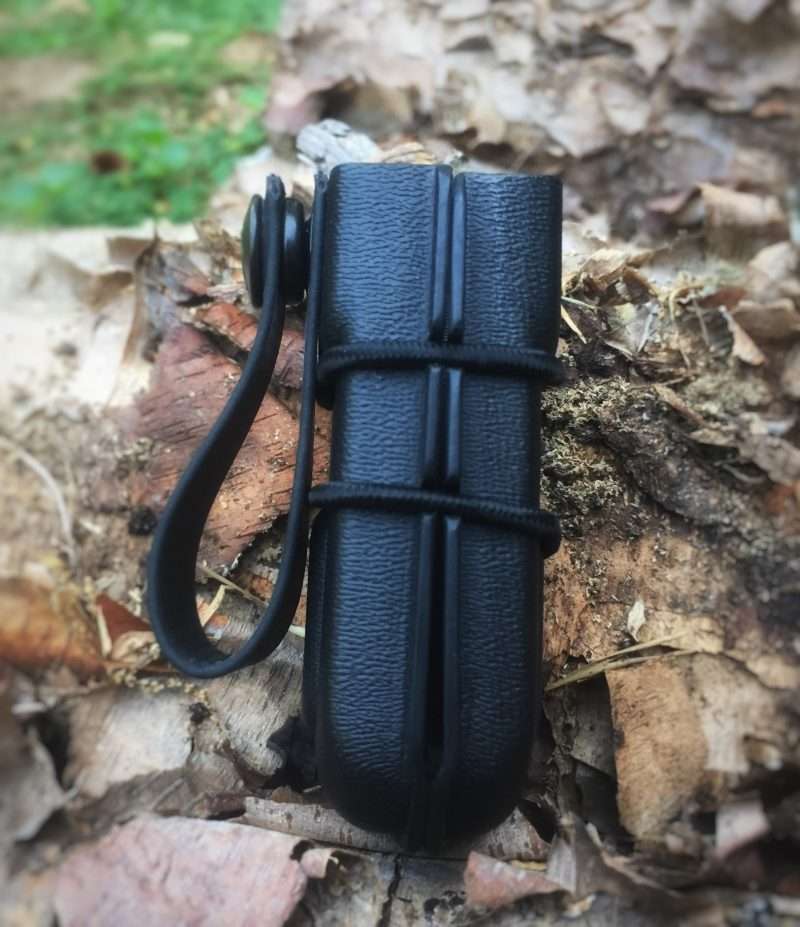
Concerns:
For my body type, the external angle that the magazine carrier slanted away from the body was not as perfect as I would have liked. This is a combination of a stiff carry belt plus the location of the soft loop places the belt riding on the lower 50% of the magazine, causing just a slight slant away from the body. A softer carry belt and maybe even an addition of the optional tuckable strut would have likely solved this problem for me.
Retention can be adjusted by looping the shock cord once around a piece of the carrier, and I suppose you could also untie the knot on one end and place a single loop knot further down the shock cord. The problem here is that you can only tighten the retention so much before the plastic body decides its not listening to shock cord anymore and doesn’t compress any further against the magazine. I will say this, I have other magazine carriers with more popular name brands and less retention capabilities than PHLster’s magazine carrier. It has retention adjustment, though a bit rudimentary, which is actually more than can be said for others, but there are some limitations.
Gen 2 PHLster Skeleton Holster
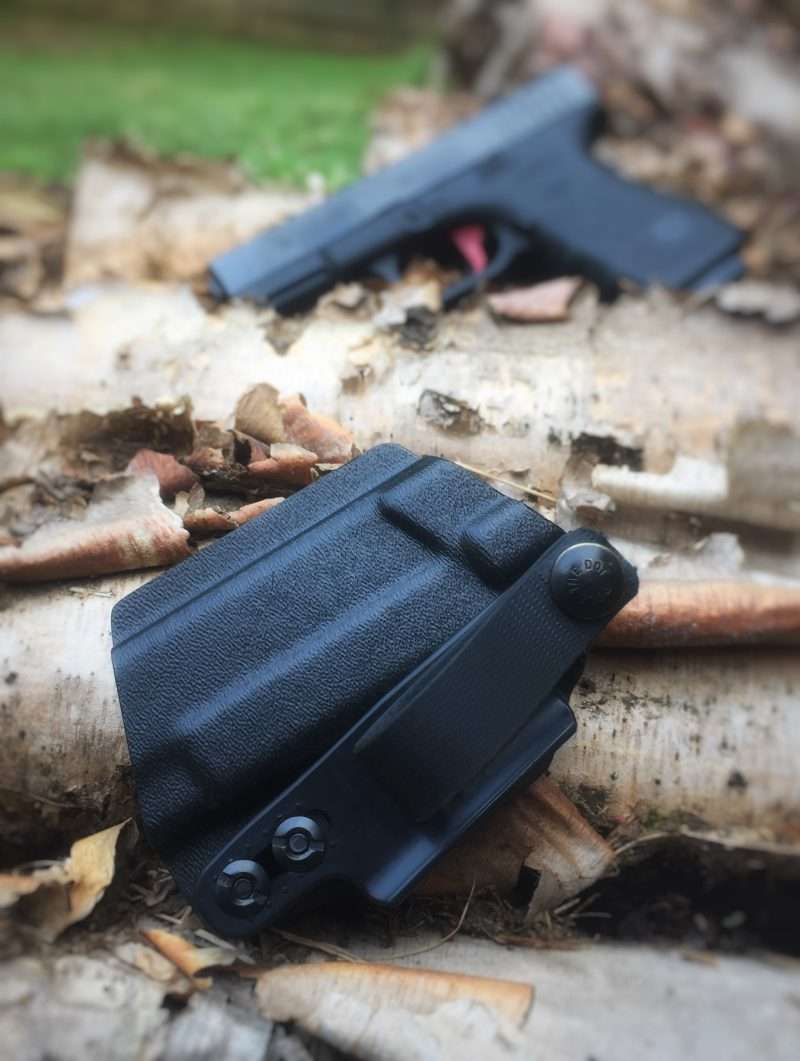
Minimalism sounds like a hipster buzzword thrown around by the skinny dude with a manbun serving me my double sugar extra fat triple shot coconut cold brew at my favorite local coffee shop…. Except we are talking about a holster for a Glock and that would probably horrify the poor v-neck wearing hipster beard behind the counter. Alas, the PHLster Gen2 Skeleton Holster IS minimalist. Think of it as the Raven VG2’s big brother. It fully covers the trigger, while utilizing the trigger guard as the retention point, but encases the body of the pistol enough to allow reholstering of the firearm with one hand, while still using the least amount of material that is necessary. The holster ships with a strut and soft loop or an overhook clip. Bottom line, the holster as a whole can be explained in one word: Adaptable. The Gen2 Glock version fits pretty much any Glock model that I actually care about (17, 19, 26, 23, 22, 27, 31, 32, 33, 34, and 35), and with an open bottom and top end, will accommodate comps and red dot sights.
Likes:
One of my favorite features is that the holster is fully ambidextrous with a quick twist of two screws and a flip of the strut with soft loop to the other side of the holster. Why is that important? Well, you could get kimura’d by an over eager training partner and have to get surgery on your dominant shoulder, and put in a sling for six weeks, effectively placing you on predators’ vulnerable victim list quicker than you can say “tap tap TAPPPP!” But lets be real, you’ll probably just break your arm falling off a ladder while cleaning the gutters… Regardless, the Skeleton Holster is there for you both left or right handed, and can be ready with only one purchase of a holster instead of two… or five… or ten (because we all have a box of holsters in the closet).
The minimalist aspect of this holster really does work very well with PHLsters’ design, but its customizable ride height and angle is flexible enough that it has actually helped me carry the G19 on a more consistent basis. The most print you really get out of this holster is the handgun itself. The holster is not bulky so it doesn’t bulge any more that needed compared to some kydex appendix IWB holsters that have to round their corners thus adding more material and bulk. Without a claw, I was initially concerned that the pistol grip would jut out and print, but there was no such issue. The strut ride height and angle is easily adjustable and I was able to find the perfect height and angle that both optimized establishing a grip and drawing the handgun, but also maintaining concealability on a smaller frame.
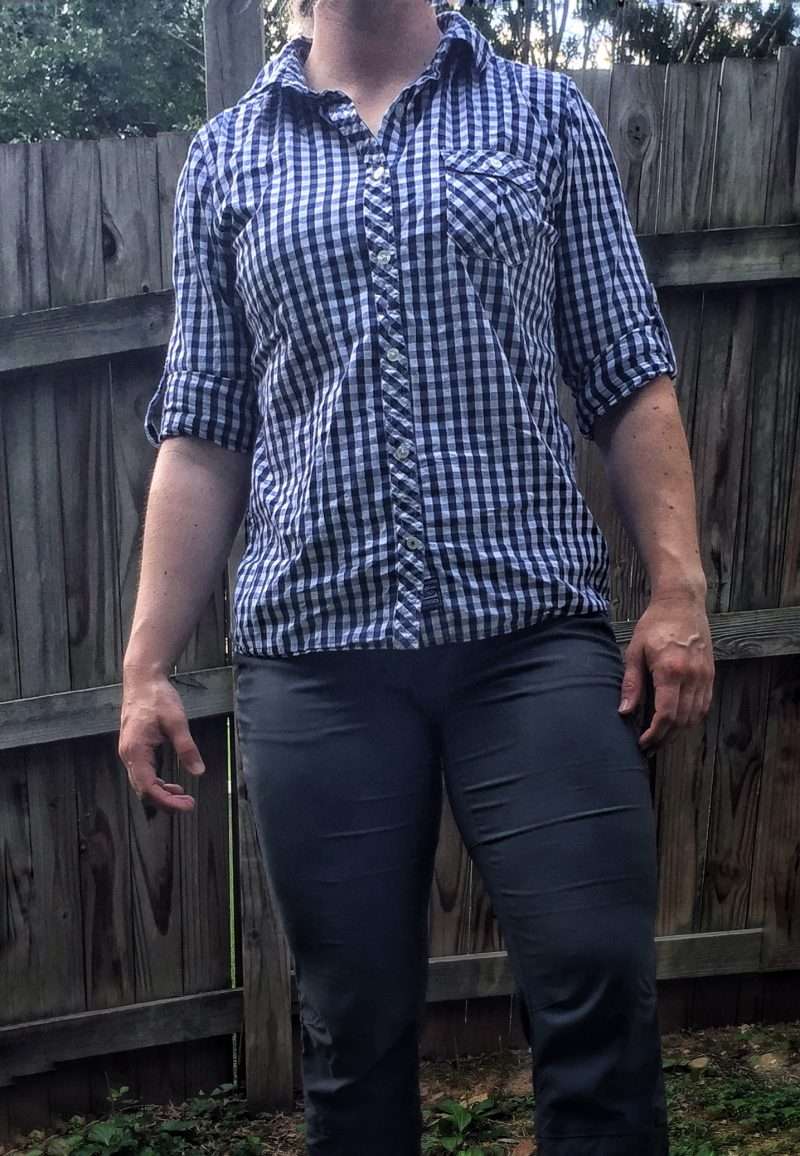
Concerns:
Skeletonized and minimalist means the least amount of material as possible while maintaining function. That means there are no options available that a weapon mounted light compatible. Oh well, carry a handheld. Unfortunately, minimalist also means at least an inch of the barrel end of the pistol is jammed up against your nether regions, and the heat emanating from the barrel after a long string of fire is unpleasant to say the least (unless you are wearing silkies in which the soft silken smoothness will act as a fire-retardant barrier from the heat… Sorry my black Soffe clad RLTW bretheren, Ranger panties don’t count, and you’re appropriating my cultural! But keep posting your photos to @gunnybearz. The ladies thank you) That being said, I ran a whole 2-day pistol class with a G19 or G34 in this holster and didn’t get burned; warm and toasty, but not burned. Then again, I WAS wearing my silkies…
One critical piece to be aware of, is that if you are carrying the holster set up for left-hand carry, the user must be careful where they position the strut. If the strut is positioned over the mag release on the left side of the handgun, the retention from a carry belt plus pressure increases from sitting down and moving around may cause the strut to depress the magazine carrier. Simply move the strut ¼ inch right or left and the problem is solved.
Conclusion
In conclusion, the kimura/shoulder surgery was my true story, and in all seriousness, raises a great question: are you prepared to carry your firearm right now with your non-dominate hand with both gear AND training? I wasn’t as prepared initially as I should have been, but with a little foresight I easily could have been and for a great price. PHLster’s overall increased in design efficiency, and probably production time and cost as well, reflected in the MSRP (as of the original writing, Flatpack: $24.99 + Magazine carrier $34.99 + Holster: $54.99 = $114.97).
The PHLster EDC kit brings together three vital pieces of kit needed for minimalist, ambidextrous set up, or entry level carry for the price of only a holster from many other competitors. If you’re on a budget, looking for a practical and reasonably priced gift for a friend, or need a backup carry kit for an emergency, PHLster has you covered.
For more of our holster overviews, see:

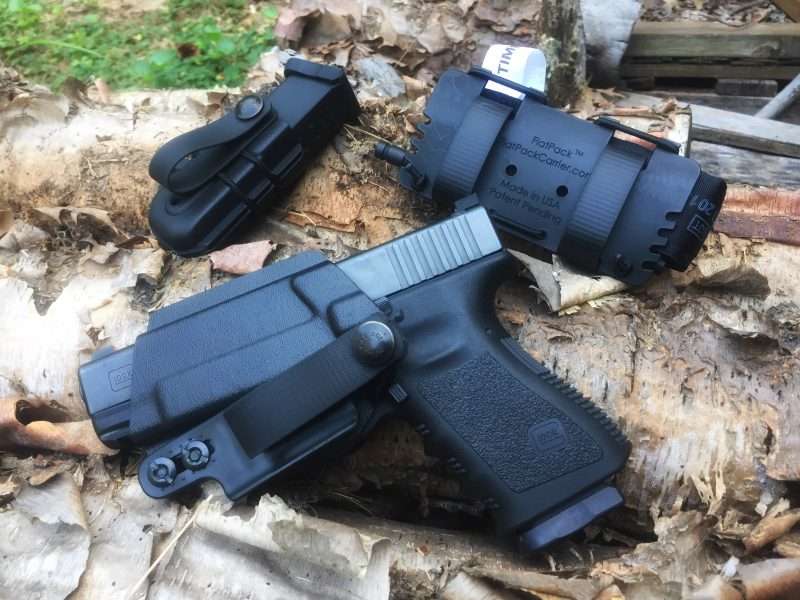



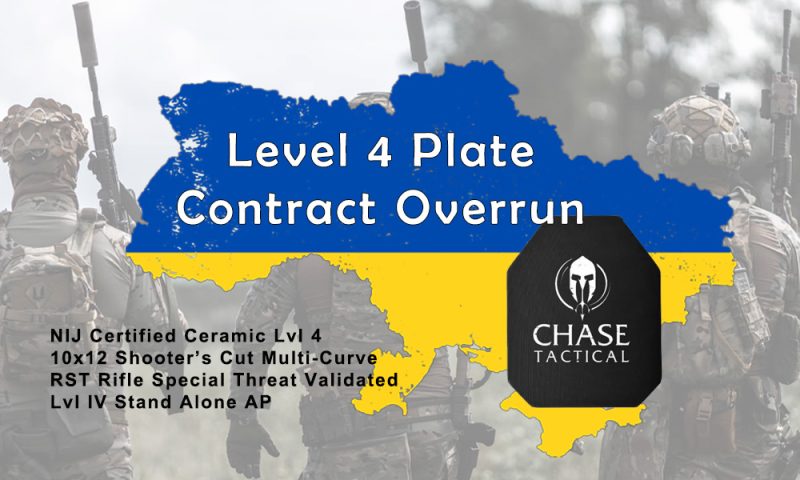




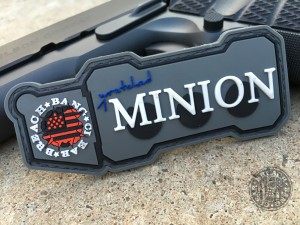
0 Comments